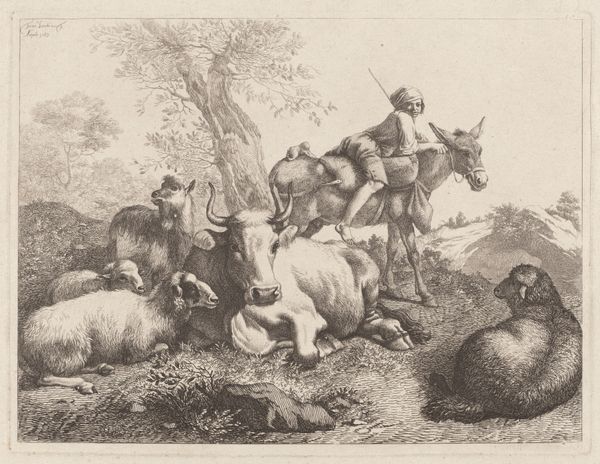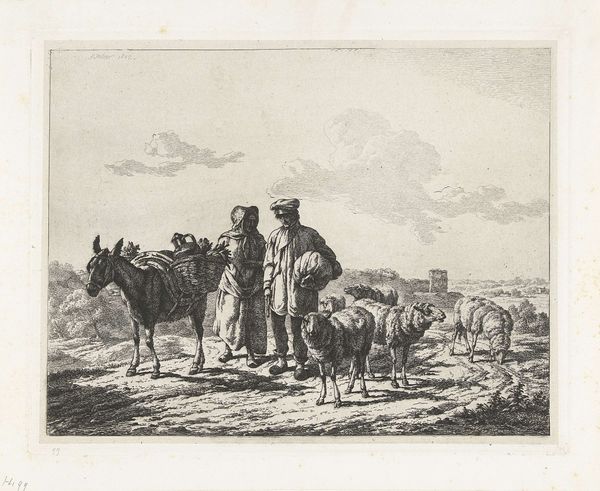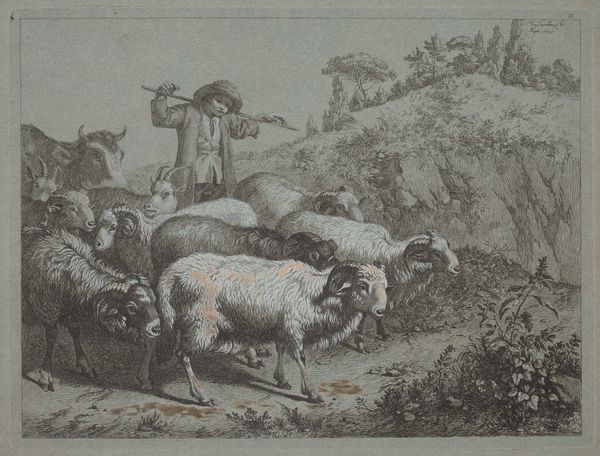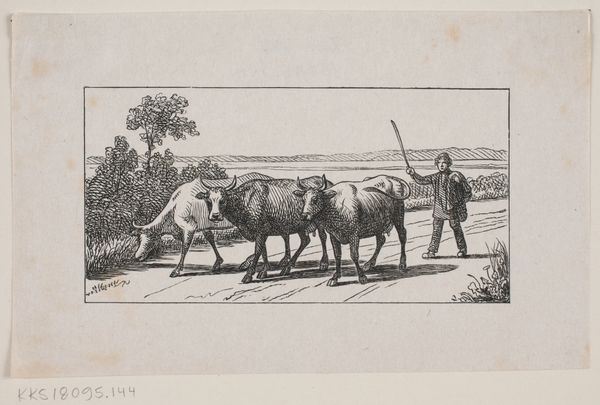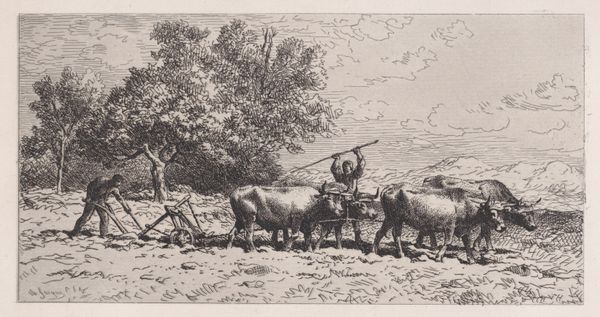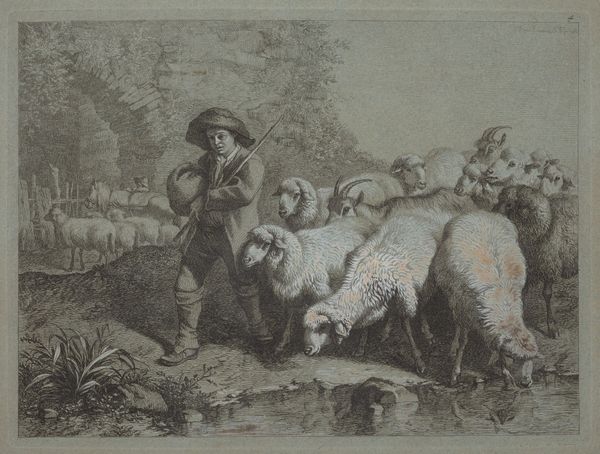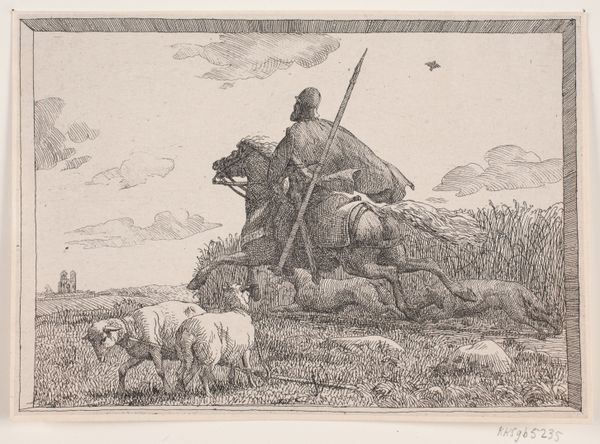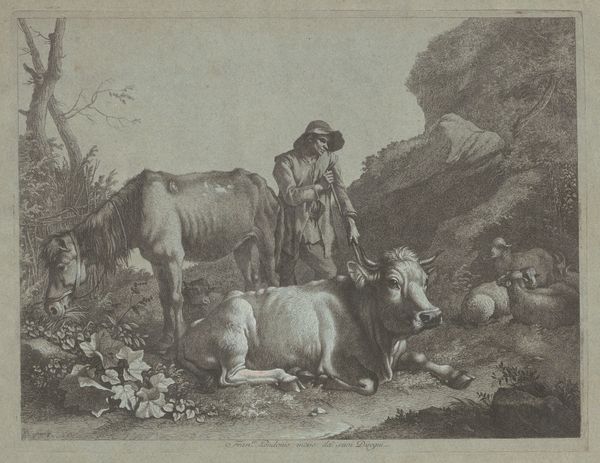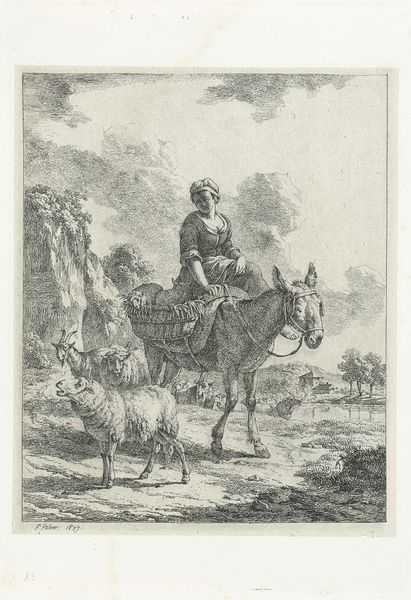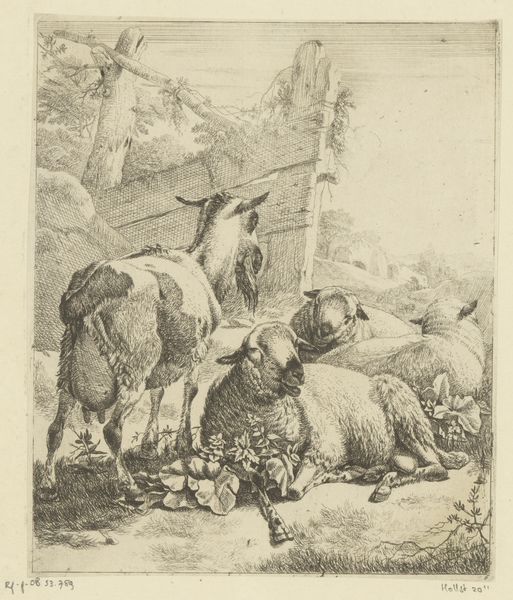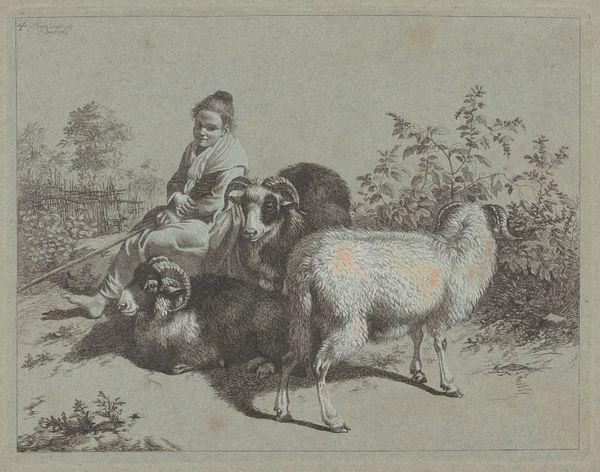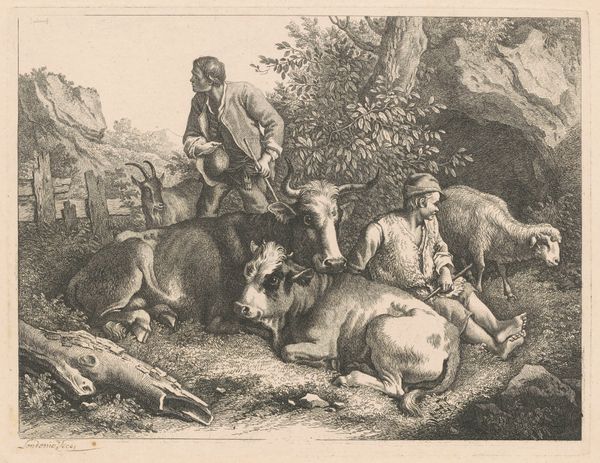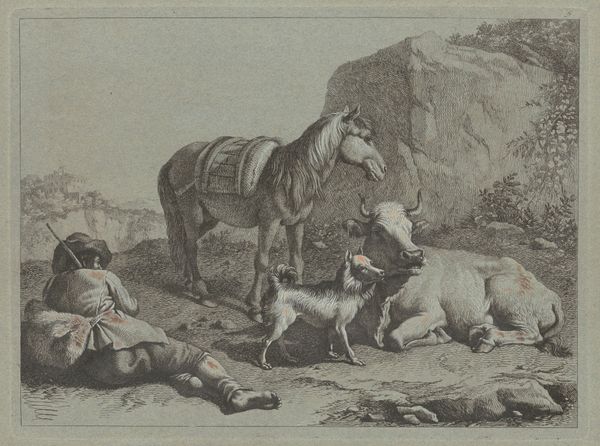
Dimensions: plate: 18.9 × 24.5 cm (7 7/16 × 9 5/8 in.) sheet: 28.4 × 41 cm (11 3/16 × 16 1/8 in.)
Copyright: National Gallery of Art: CC0 1.0
Curator: Look at this lovely etching by Francesco Londonio, made in 1763, called "Boy on a Donkey Driving a Flock." It's deceptively simple, wouldn't you agree? Editor: Immediately, I’m struck by how grey and melancholic it is, like a faded memory. The boy looks almost swallowed by his coat and that poor, overloaded donkey. Is it romanticizing poverty or highlighting its burdens, I wonder? Curator: Both, perhaps! Londonio was playing with genre painting, elevating the everyday. Think of it: he's using Baroque techniques – theatrical light, dynamism – for this rural scene. But, there’s a gentleness, an idealized quality. Those sheep practically pose for the portrait! Editor: Idealized perhaps to those not doing the shepherding labor. It’s tempting to romanticize pastoral life, isn't it? Look at the scale: this young person responsible for livestock likely to feed a family. It points to larger questions of labor, childhood, and the rural-urban divide in 18th century Europe. Curator: You are completely correct. What speaks to me most is the composition—how the animals press forward and crowd the frame, how close we are brought. You can almost smell the wool and hear the bleating. Isn't that fascinating, how a static image can evoke the senses? And Londonio does this through such a delicate web of lines! Editor: The close cropping also adds to the immediacy of the print. However, it also raises questions about what isn't shown. Whose land are they on? What are their social and economic prospects? Are they victims or survivors in an era defined by colonial expansion and unequal resource allocation? Curator: Such critical questions! And it's wonderful that a seemingly unassuming image can spark such reflections. To me, Londonio captured a timeless quality. The scene is rooted in its period but could, in a way, echo in any rural landscape where the young shoulder responsibilities beyond their years. Editor: Ultimately, "Boy on a Donkey Driving a Flock" becomes an invitation for considering our past and how inequalities continue shaping realities across societies. It’s a beautifully rendered snapshot but the snapshot needs context and deeper reflection.
Comments
No comments
Be the first to comment and join the conversation on the ultimate creative platform.
